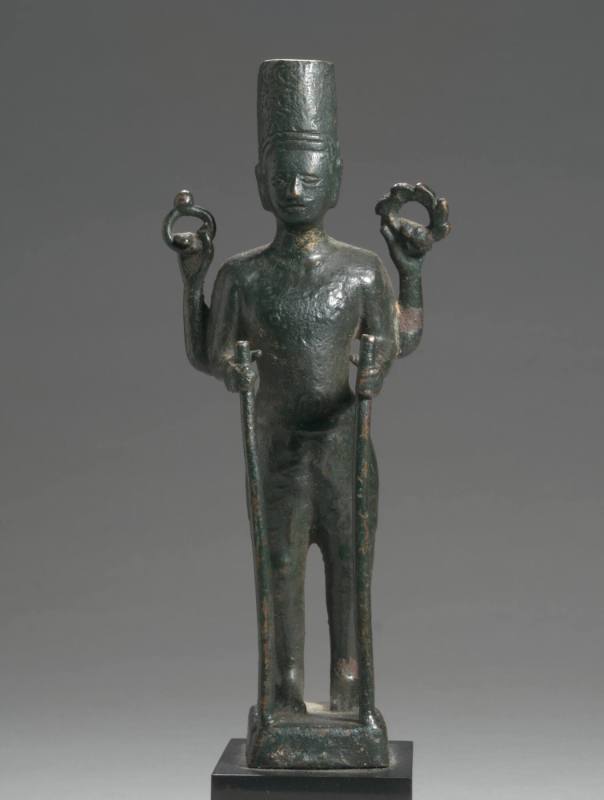



Object Details
Artist
Unidentified foundry
Date
ca. 1900
Medium
Wax over plaster core, model prepared for lost-wax bronze casting
Dimensions
Sculpture: approx. 13 7/8 × 8 3/8 × 10 inches (35.2 × 21.3 × 25.4 cm)
Including mount: H. 17 1/2 inches (44.5 cm)
Credit Line
Acquired through the Ernest I. White, Class of 1893, Endowment Fund, with generous support from the Cornell University Department of Classics
Object
Number
2022.008
This is a rare surviving example of a wax cast of an ancient portrait, built around a plaster core. (…)
This is a rare surviving example of a wax cast of an ancient portrait, built around a plaster core. Its original is a marble portrait of the Seleucid king Antiochus III (223-187 BCE), itself a Roman copy of an earlier original. The wax cast is a transitional object in the lost-wax method of casting bronze sculpture and would normally be consumed in the process.
Pliny provides crucial information about ancient uses of this technique, crediting Lysistratus of Sicyon, brother of the fourth century BCE sculptor Lysippus, as “the first person who modeled a likeness in plaster of a human being from the living face itself, and established the method of pouring wax into this plaster mold and then making final corrections on the wax cast” (35.153). Pliny suggests that wax casts made directly from human bodies could then be altered to create different visual effects. Surviving bronzes suggest that this technique of replication and modification was used by Greco-Roman sculptors to create multiple variations on a theme. Beeswax was fundamental to this process, its malleability allowing for both precise reproduction and subtle refinement.
Although there is little evidence for ancient casting from life, the “veristic” style of Hellenistic and Republican Roman portraits such as this head of Antiochus certainly project the idea of fidelity to their human models. As such, they also resonate with Pliny’s discussion of the wax masks of family ancestors (imagines) that were displayed in Roman aristocratic houses and carried in funeral processions.
(Verity J. Platt, “Wonder and Wakefulness: The Nature of Pliny the Elder,” exhibition organized by the Herbert F. Johnson Museum of Art, curated by Andrew C. Weislogel and Verity J. Platt, presented at the Johnson Museum January 21–June 11, 2023)












